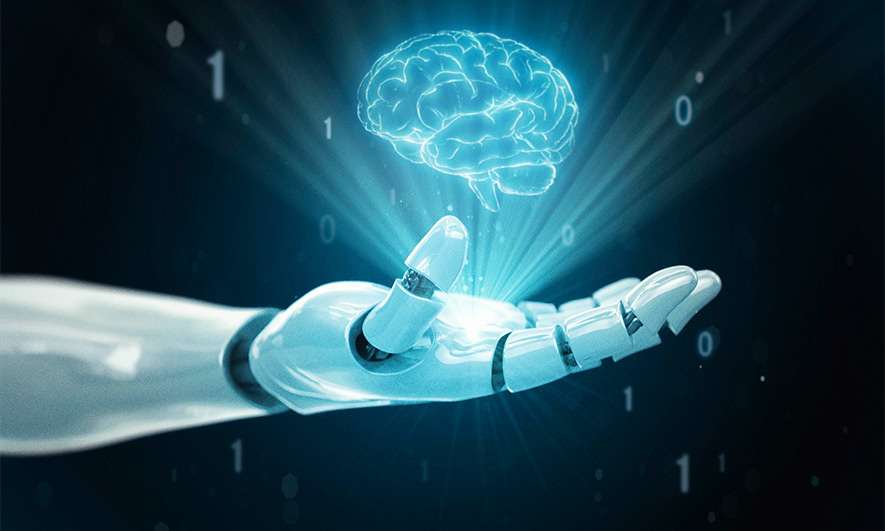Mention autonomous technology and most people think of self-driving cars. But professionals at The Hartford see autonomous technology evolving and expanding across many industries well beyond transportation.
To evaluate autonomous technology and measure its effectiveness across different industries, The Hartford brought together leaders from claims, emerging risks, IT, risk engineering and underwriting to assess these technologies from a variety of different angles and help businesses understand how their coverage may need to evolve.
Considering Autonomy? Evaluate Your Risk
Based on recent insights, Zarkowsky suggests business leaders explore these topics with their risk partners as they evaluate investments in autonomy:
- Data Quality and Compliance: Autonomous systems are only as good as the data you’re putting into them. Make sure your business has concentrated human oversight to avoid data misuse or exposures.
- Autonomy-Specific Governance: Bring risk management professionals into your governance and testing process at the development stage and on a regular basis.
- Underwriting Based on Risk Spectrum: An autonomous device is not without risks, even if it isn’t used on public roads. Carefully assess the risks of autonomy based on how and where the technology is being used.
- Potential Gaps in Coverage: Autonomy adoption could open serious gaps in existing business coverage and may require changes or new coverage to close them. As a start, Zarkowsky advises that company leaders may want to review these coverages with their insurance partners as they make or continue plans to automate business functions:
- Cyber
- Technology errors and omissions
- Property insurance
- Product liability insurance
- Commercial auto insurance and related vehicle policies
Artificial intelligence (AI)-aided devices can learn, detect problems and potentially prevent significant risk to people and business operations, so it’s critical for companies and their risk management experts to study this technology in real time.
Autonomous Technology in a Human Workforce
Autonomous technology gathers data and makes specific types of decisions typically made by humans. A 2025 Gartner study predicts that by 2028, “at least 15% of day-to-day work decisions” will be made autonomously through what’s known as agentic AI, up from zero in 2024.1
Agentic AI is just one approach to AI and it can be designed to detect, measure and potentially remedy problems in specific settings and circumstances to keep employees and businesses safe. Large language models (LLM) give these autonomous systems even more capabilities without the need for traditional programming by code, Zarkowsky explains.
Previously, autonomous robots and vehicles were more rigid machines due to strictly programmed coding that could only enable singular or simplistic tasks in a confined space. Evolving AI applications will allow machines to do more.
“Now, these systems have the ability to understand and communicate using natural language, allowing them to work even closer to humans who don’t have sophisticated computer programming knowledge,” says Zarkowsky. “Working together, they’ll both be able to solve problems in real time with more detail and discovery. These advancements will allow autonomous systems to implement and enhance functions more easily, and much quicker than before and at a larger scale.”
Rapid advancements in artificial intelligence are speeding research and development in multiple industries by using autonomous functions to align with a range of human sensory behaviors.
“Autonomous products need to be able to observe and understand the world around them. As an example, they might use light detection and ranging (LIDAR) lasers to mimic a human’s eyes and vision,” Zarkowsky explains. “AI is making more immediate and customized autonomous functions possible.”
Which Industries Are Making Autonomy Work
The automotive industry is one of the most visible arenas for today’s autonomous technology. Many car companies are developing ways for vehicles to control some driving functions with little or no driver intervention.
A recent Citi GPS report forecasts that 1.3 billion AI robots will be replacing human assignments in consumer and business settings by 2035 and potentially four billion by 2050.2
“There is an opportunity to transition segments of the workforce away from dirty, dull, or dangerous tasks and toward more advanced, strategic responsibilities over time,” Zarkowsky says. That’s why use cases are evolving across companies that operate factories, facilities and even farmland. For example, certain farm equipment can operate without a driver, which can increase worker safety, improve efficiency, and scale and grow the business.
Zarkowsky notes that insurance claim activities can become significantly more efficient with autonomous processes that measure significant risks before they reach a claims adjustor.
“We’re entering a world where, from a claims perspective, it won’t take a lot of time to figure out what happened to a car during an accident,” Zarkowsky says. “We can look at the cameras in the car or a camera in the street intersection. Over time, this data will help design cars, machinery and systems that will assist customers in preventing claims.”
Yet, comprehensive design and testing will be essential before AI can be adopted in core areas of insurance.
That’s why human supervision of autonomous processes and robots is still integral to a company’s success. An employee’s critical-thinking abilities, specific knowledge and adaptable decision-making skills can serve as checkpoints for tasks that autonomous technology will fill.
Addressing Potential Liability Challenges of Autonomy
Autonomous technology has both positives and negatives for the insurance industry. Insurers and their policyholders will almost certainly benefit from innovations that can spot and mitigate risks before they happen. However, if a human is no longer in control of a company’s vehicle, machine or digital system, the question of liability could become substantially more complicated for the business and their insurers.
“For all the benefits autonomy will provide, company leaders and their risk partners need to understand that an auto liability claim may actually be a product liability claim based on the design and supply chain behind that autonomous solution,” Zarkowsky says.
No matter how autonomy affects the insurance industry in the future, Zarkowsky emphasizes the importance of maintaining strict underwriting principles designed to monitor this evolution.
Read more about how The Hartford is supporting companies in their AI risk mitigation practices.
1 2025 Top Strategic Technology Trends, Gartner, viewed May 20, 2025.
2 “The Rise of AI Robots,” Citi, published December 5, 2024.
3 “Mind the Gap,” Munich Re, February 2024, viewed May 30, 2025.





